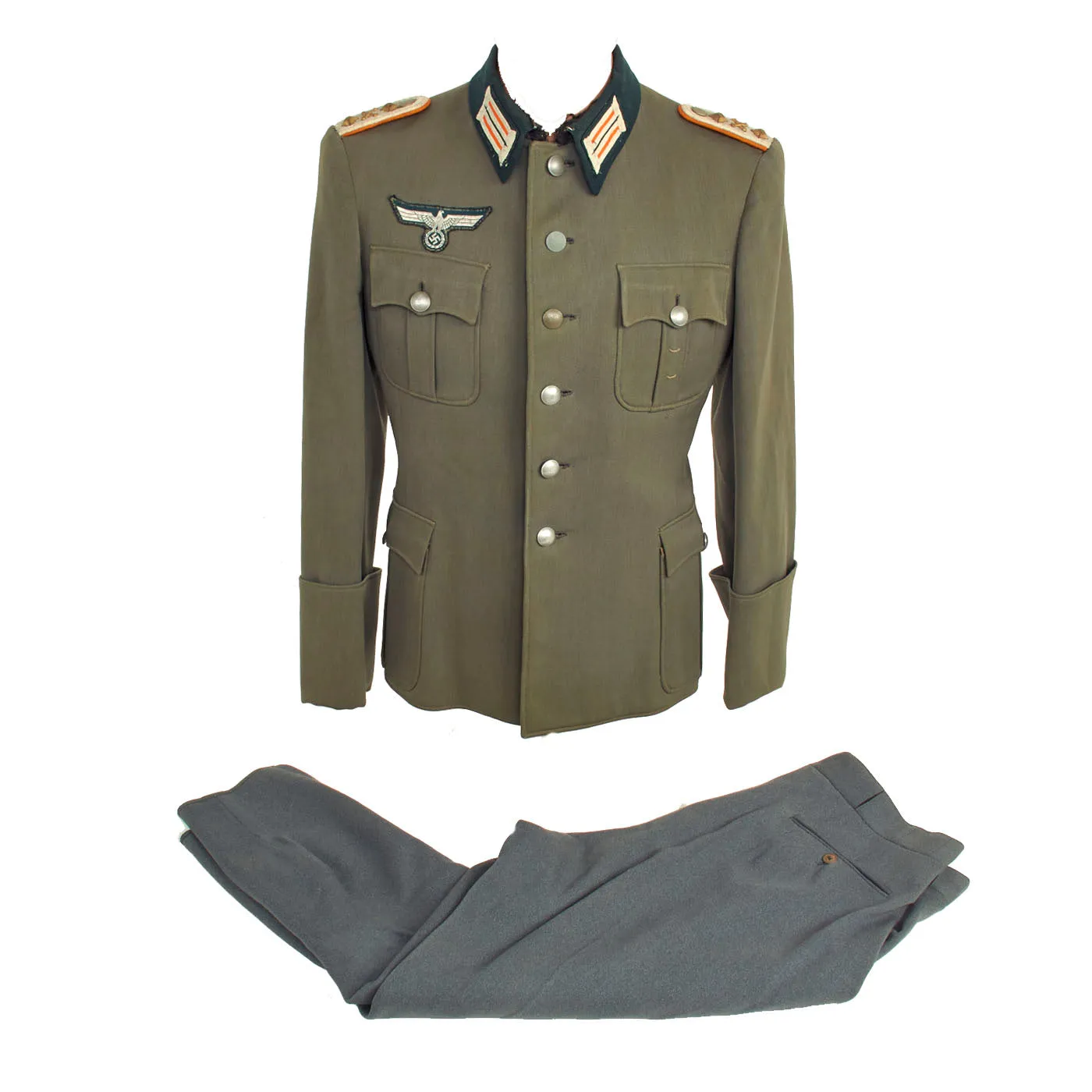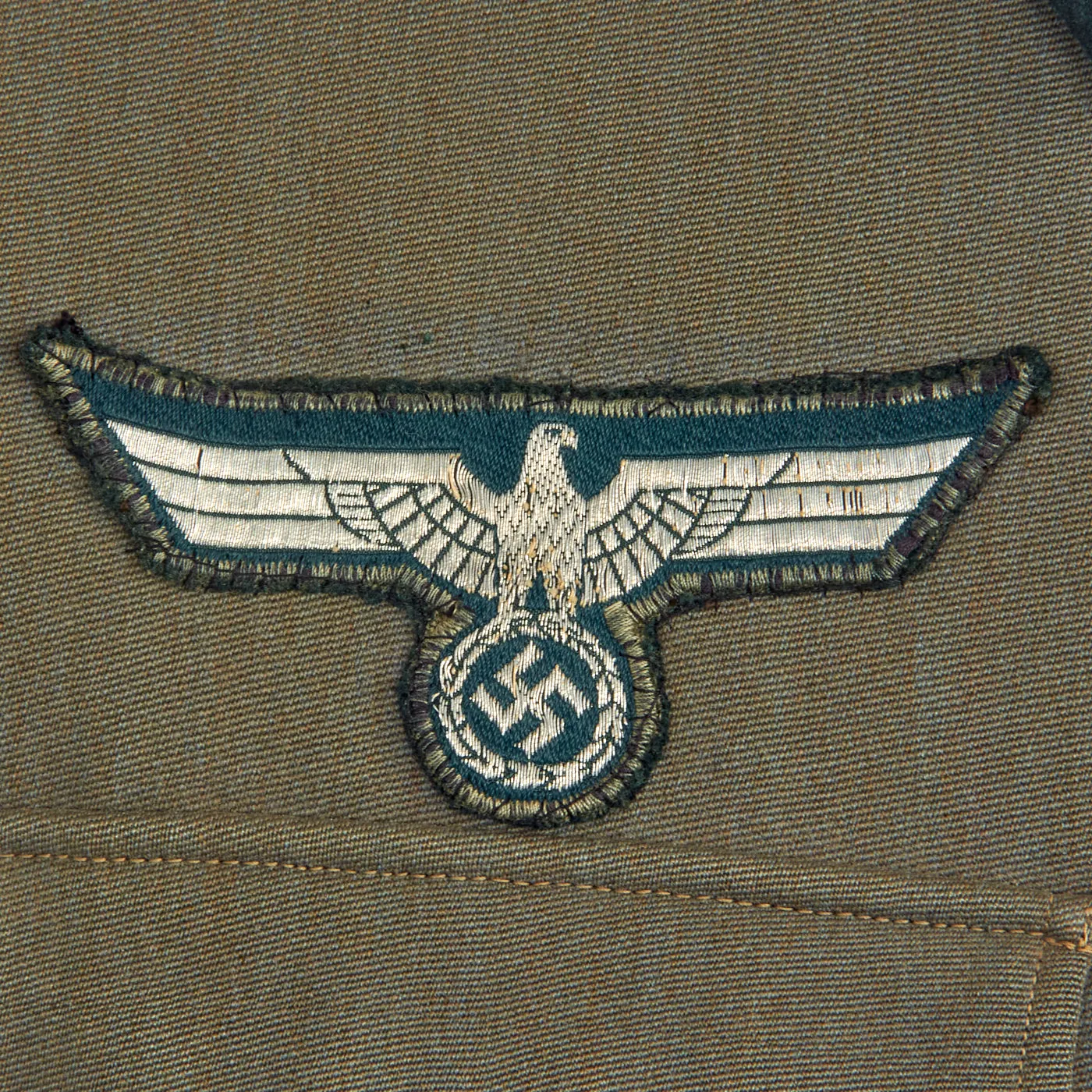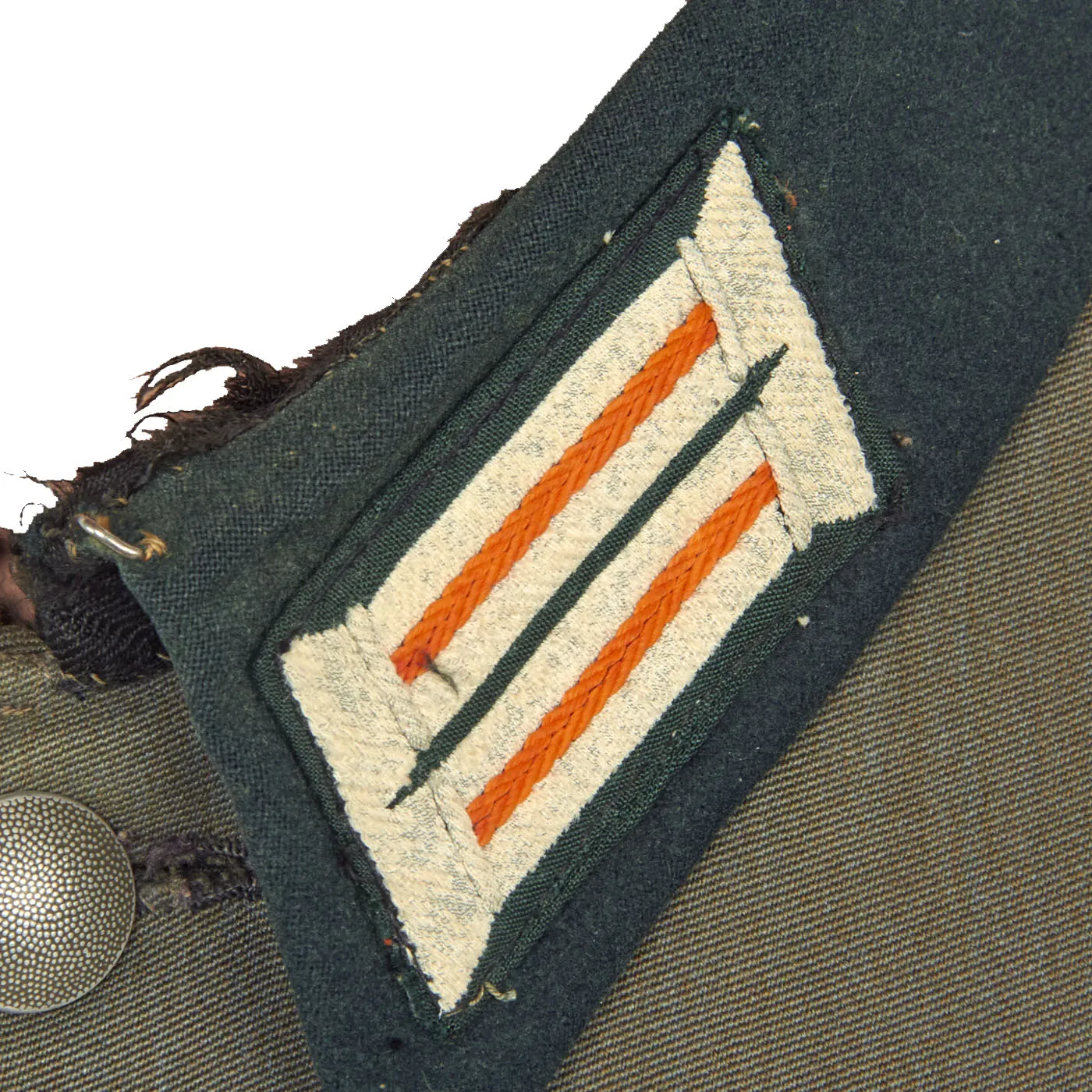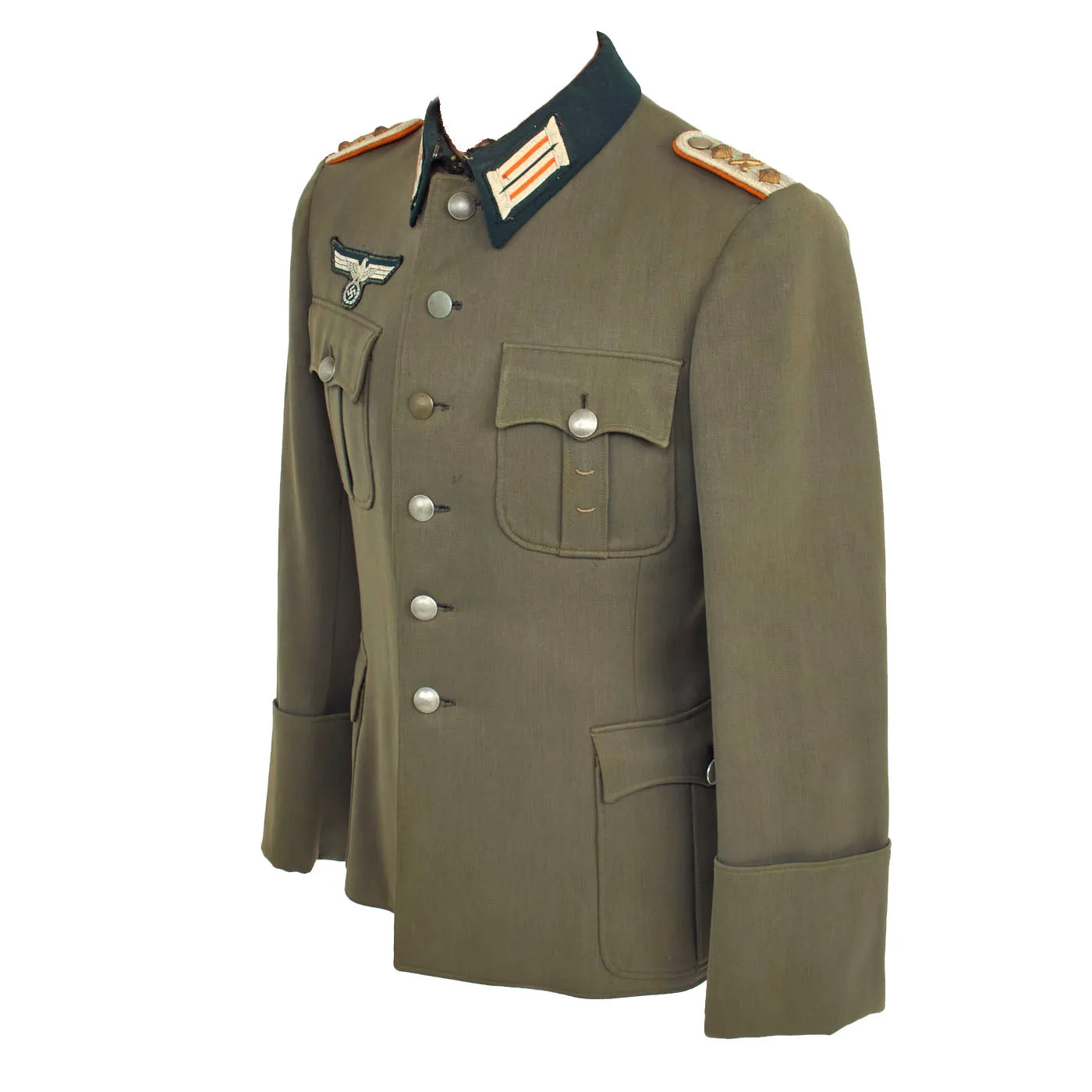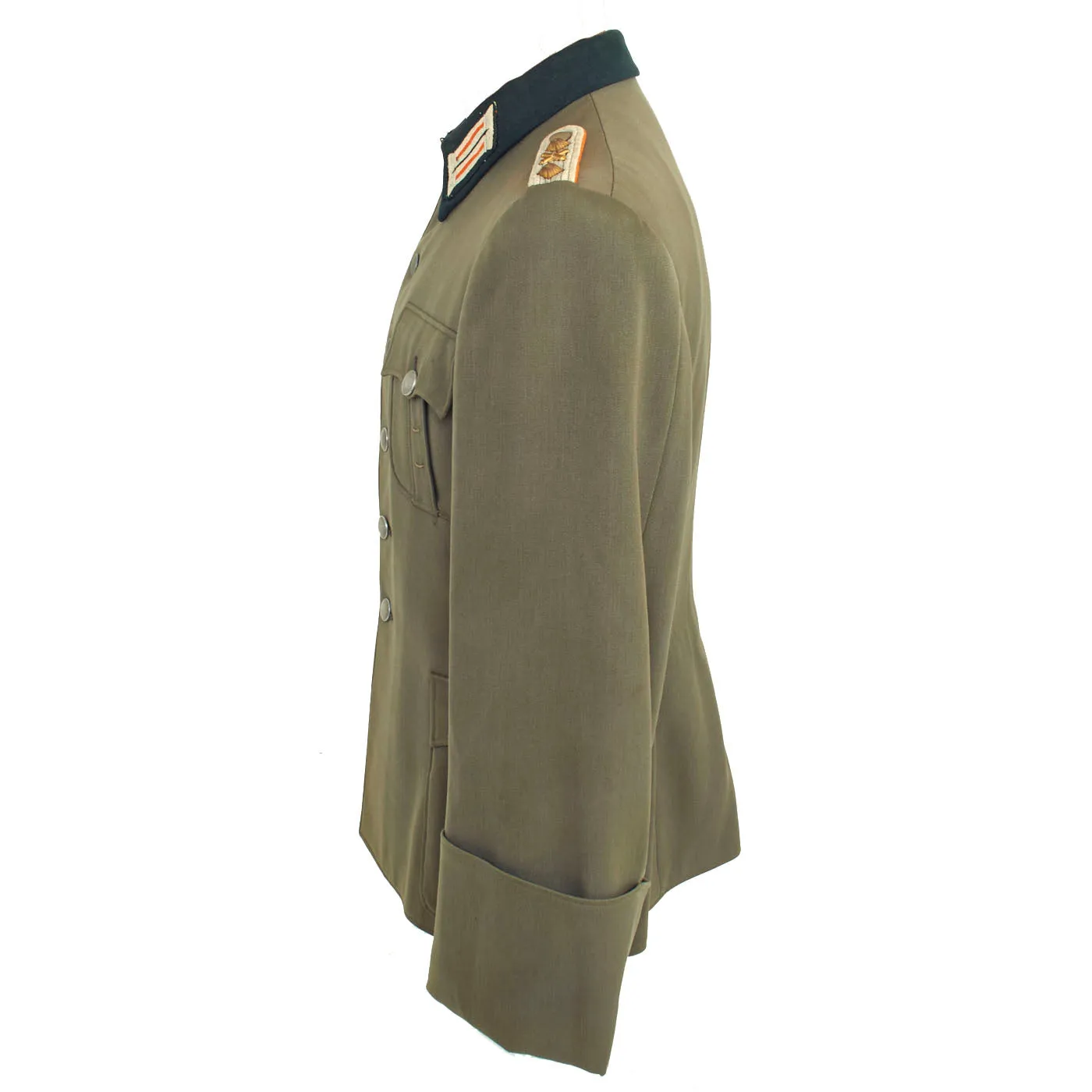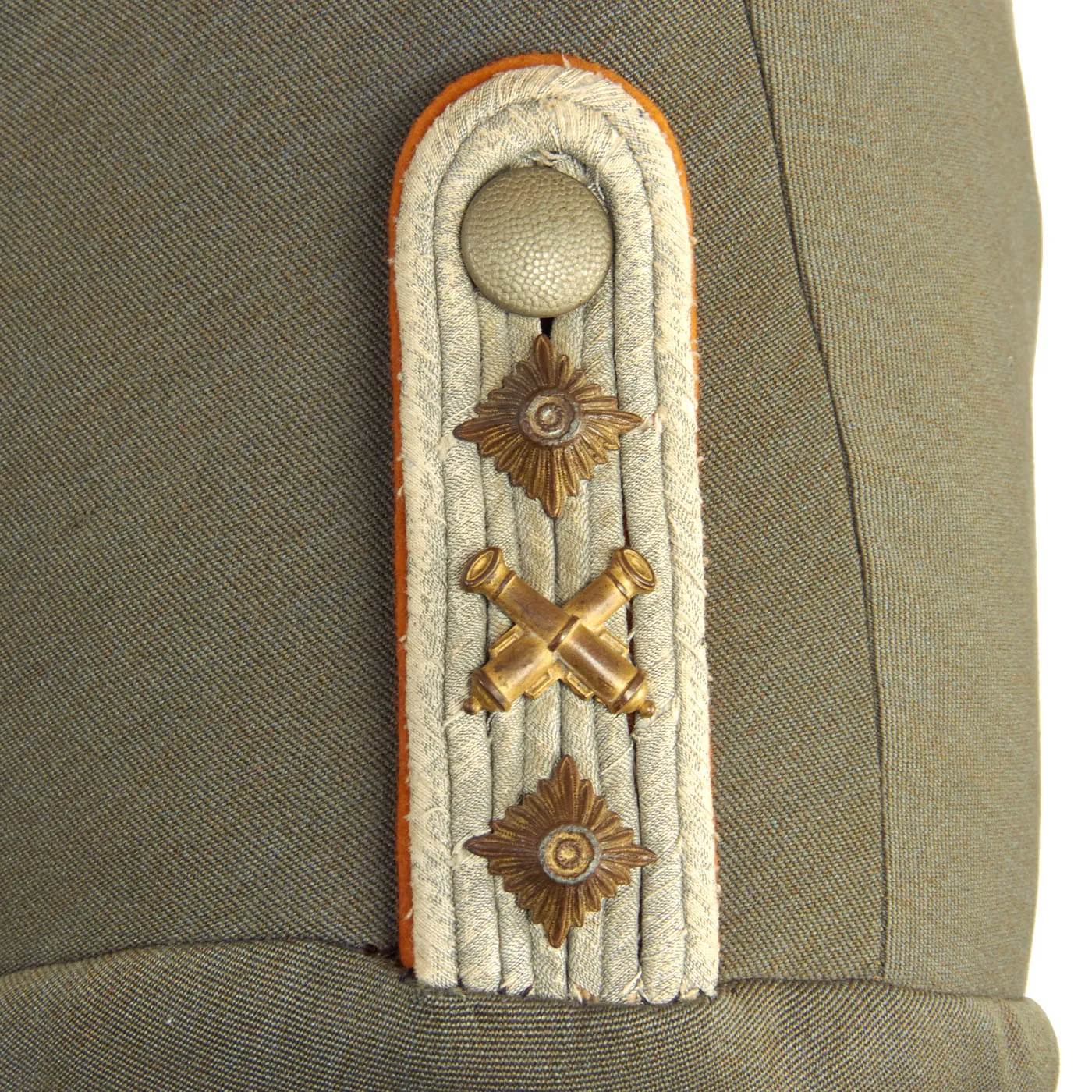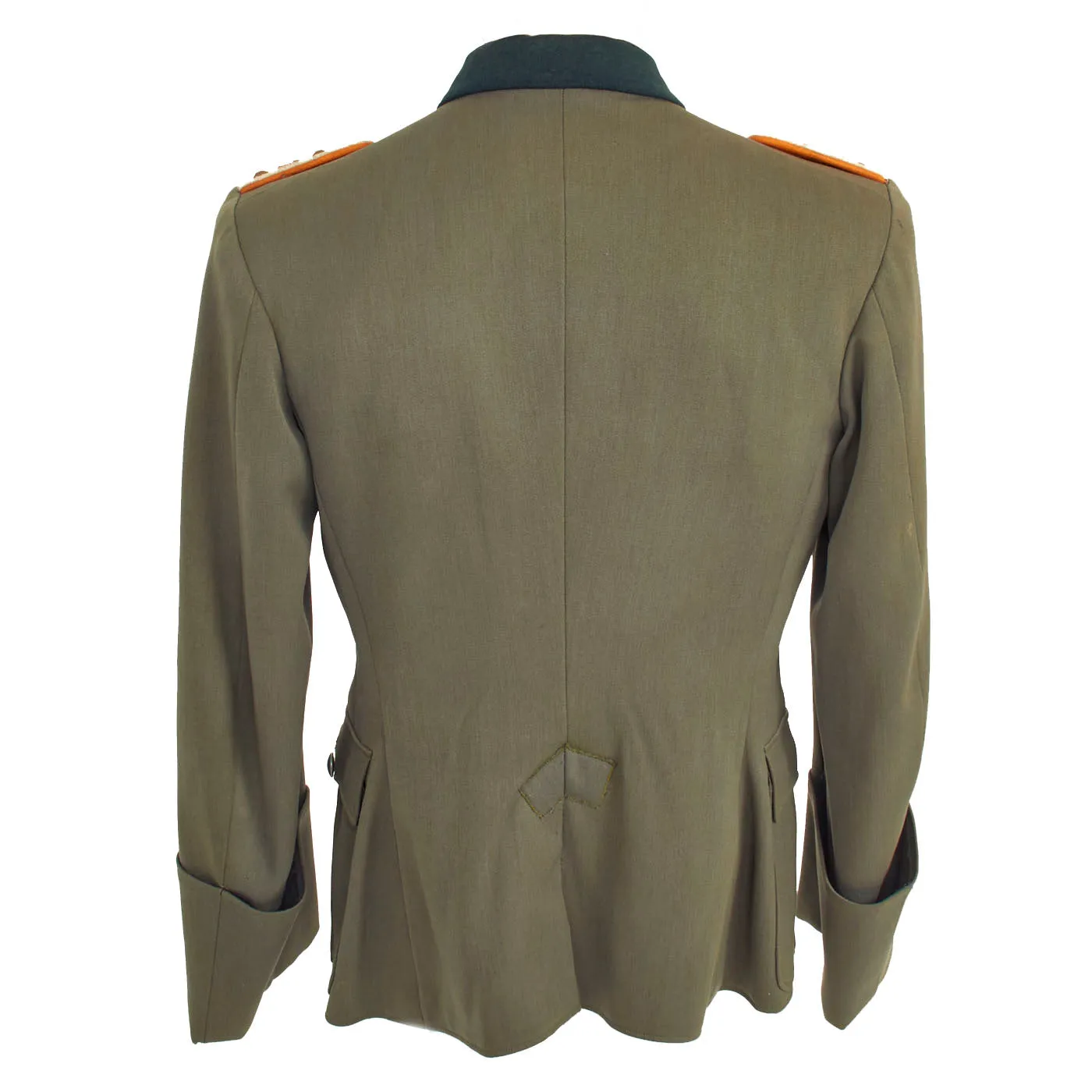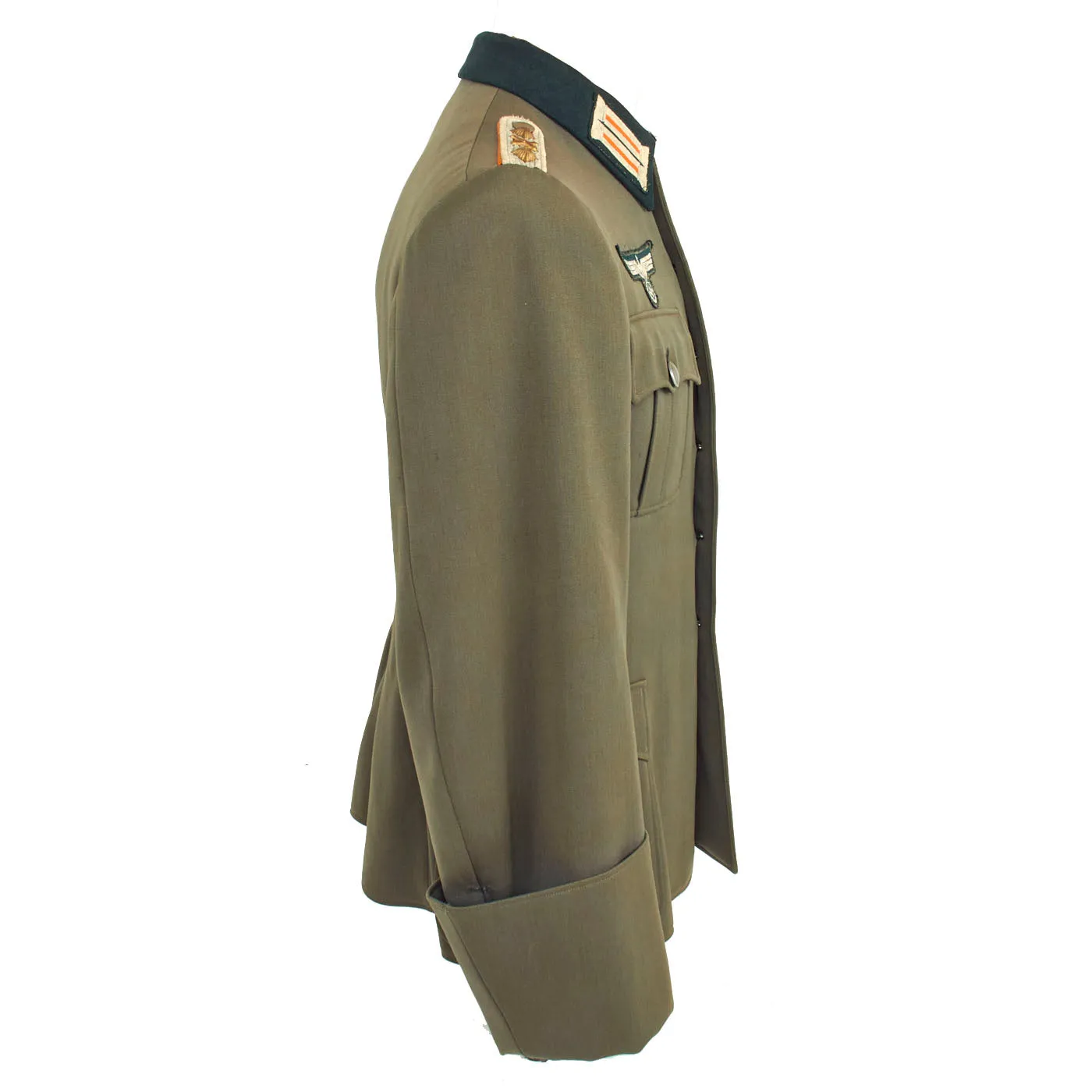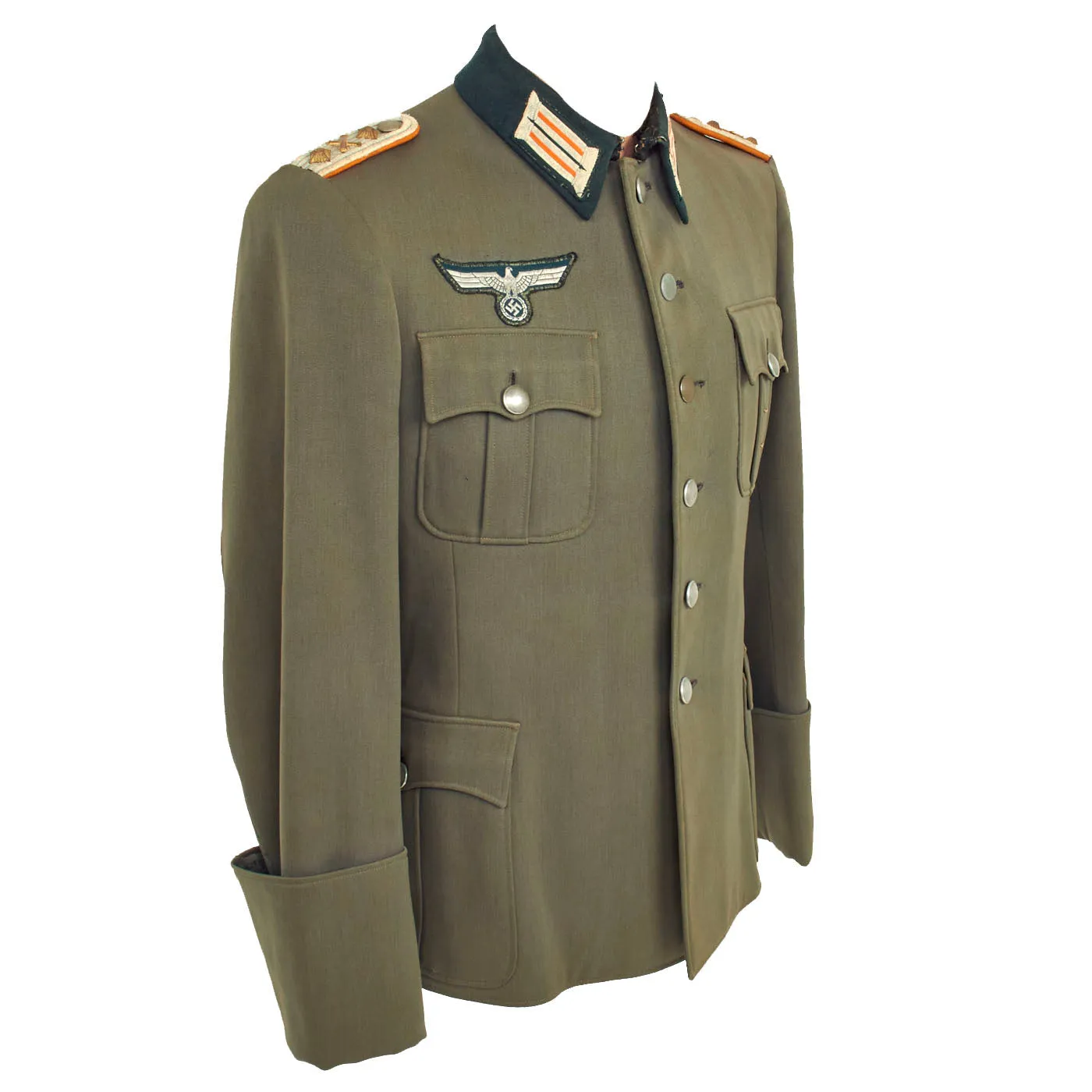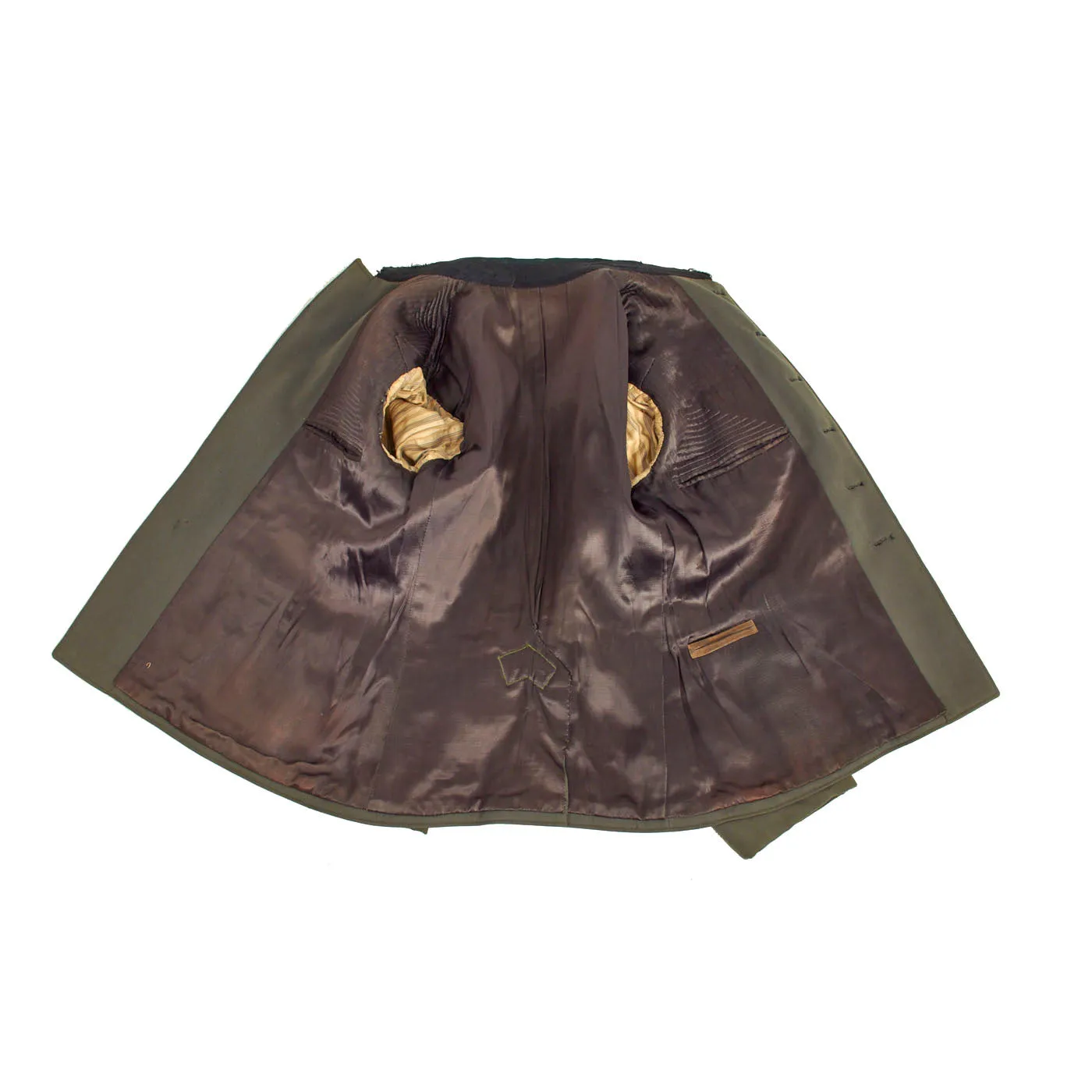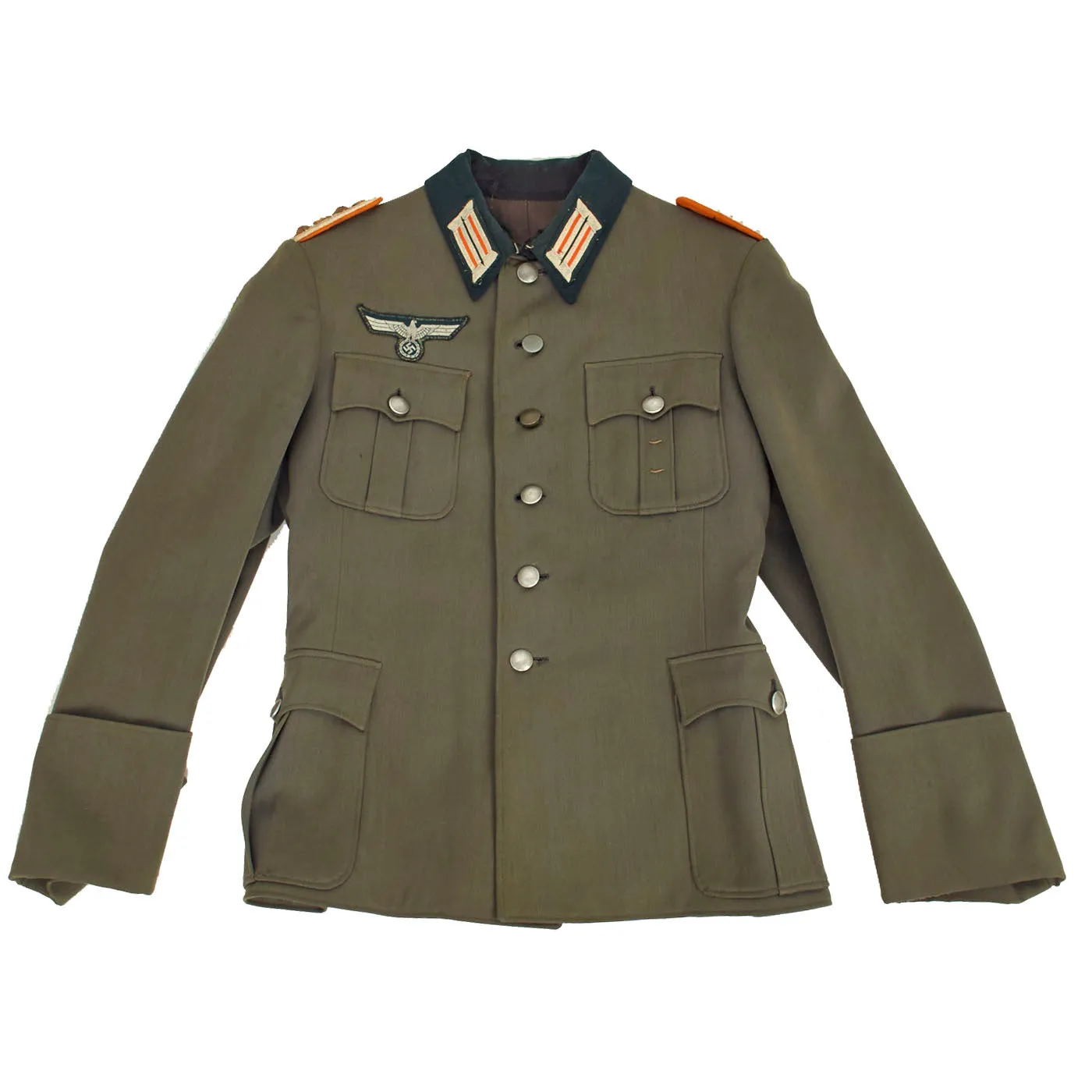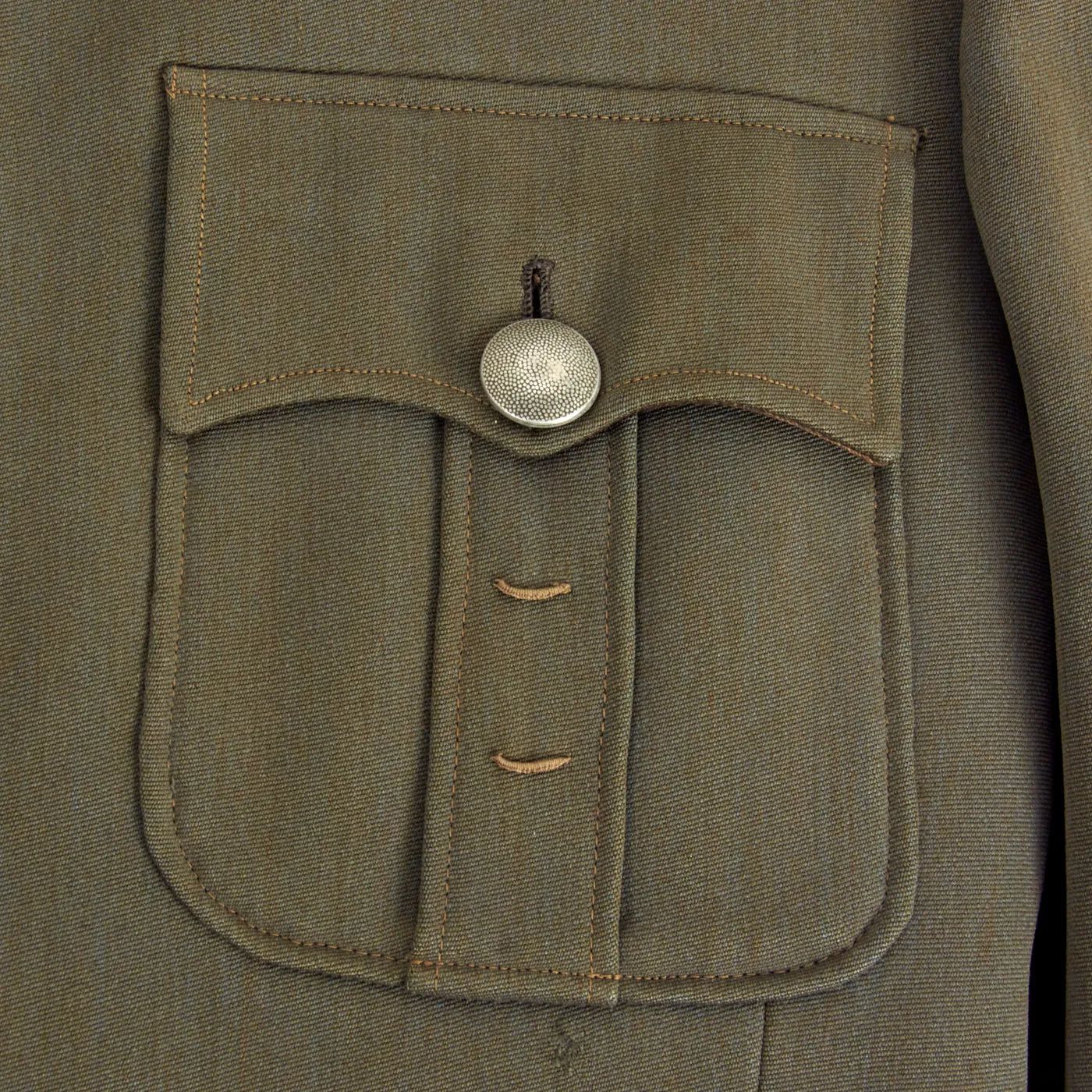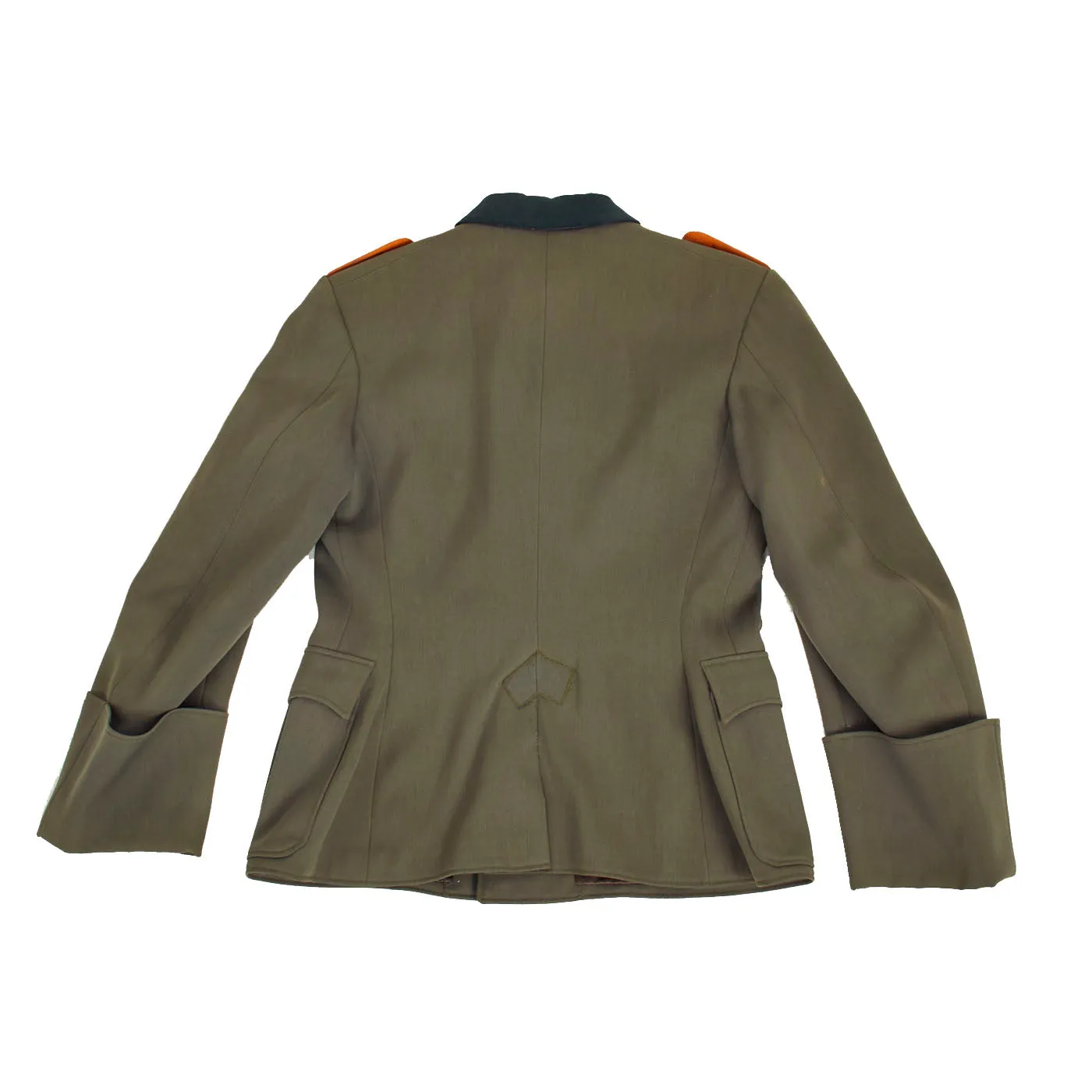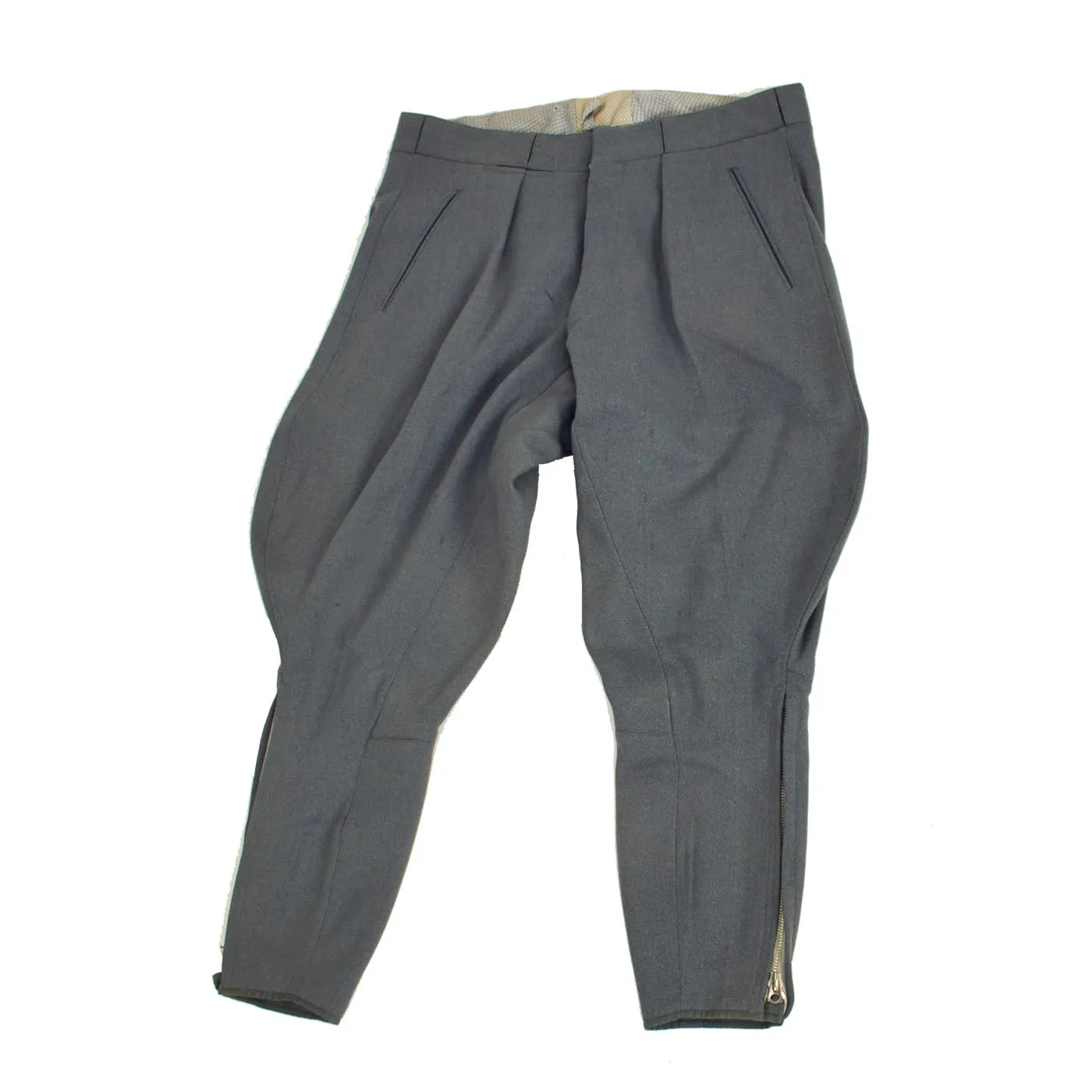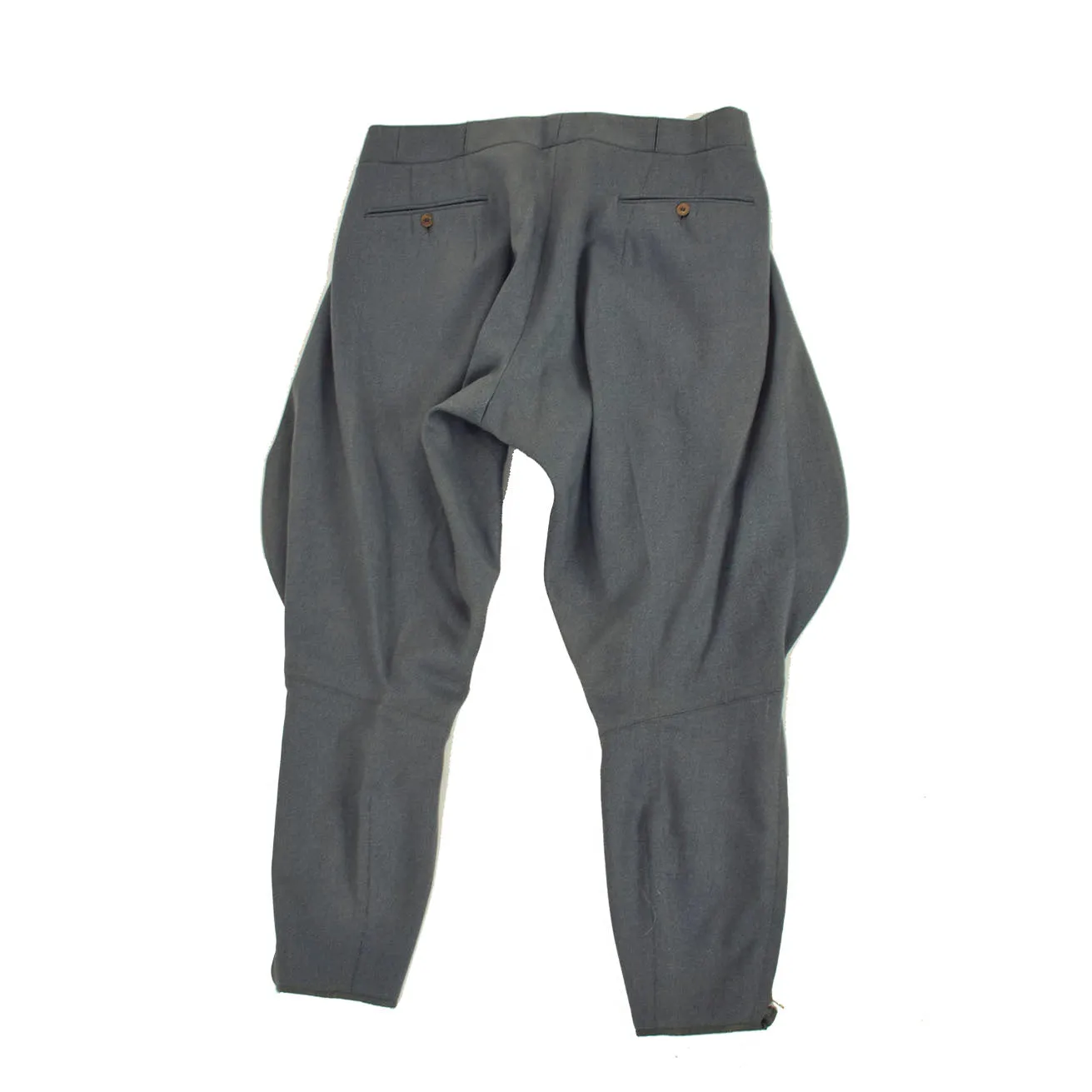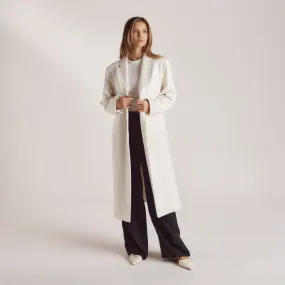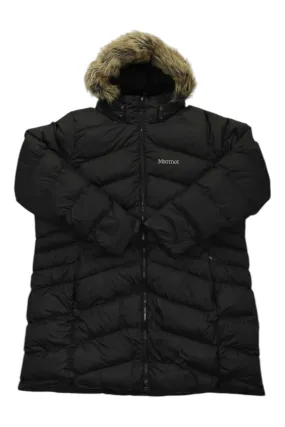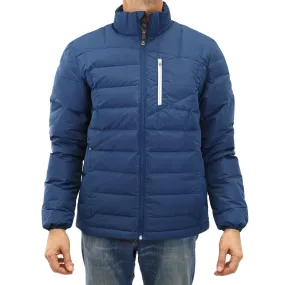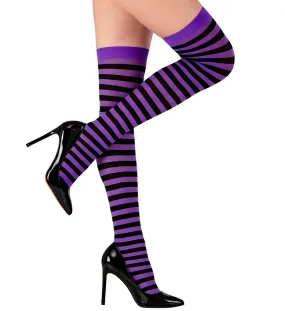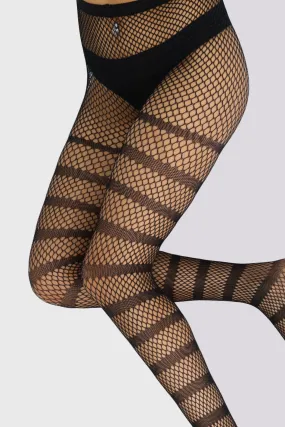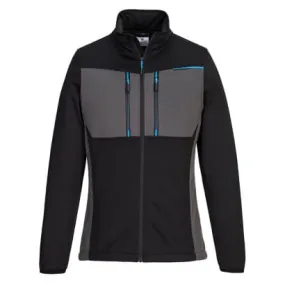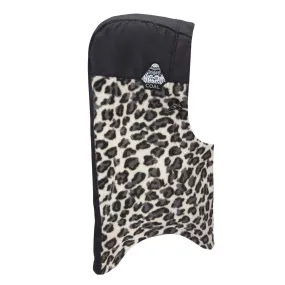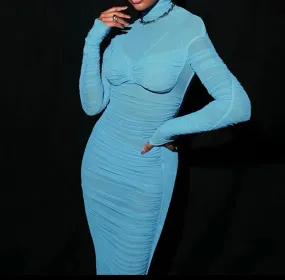Original Item: Only One Available. This is a very nice early pattern German WWII Heer Army M-36 Tunic, showing some service wear and in nice untouched condition. There does not appear to be any maker or name information inside the tunic, so it is most likely bespoke. The tunic features four pockets with scalloped flaps and pebbled aluminum buttons, and is adorned with the usual rank and branch insignia used on German tunics. The attractive Army breast eagle is the correct officer's silver BeVo embroidered type on a green background, and is very neatly hand stitched to the chest in a fashion typical of wartime German tailor work.
The collar is wrapped in a dark-green wool, has officer's litzen collar patches on each side, which are woven from white thread with a dark green background matching the collar. The colored stripes on each are Orange-gelb (Orange-yellow), the Waffenfarbe (corps color) used by both Feldgendarmerie Military Police as well as Recruiting and replacement (Wehrersatzwesen) troops. The collar is in good shape, tough there definitely is some wear around the edges, which is usually one of the first places to show damage from use.
The “sew-in” style shoulder boards of this tunic are constructed with two rows of fine silver flatware "Russia Braid" double piping and have the correct Orange-yellow piping around the edges. Each features two gold pips, which denote the rank of Hauptmann (Captain) in the Heer (army), and the "Crossed Cannons" devices indicates a Waffen Offizier (Ordnance Officer). This makes much more sense for the Feldgendarmerie than for recruiting, so the rank would correctly be termed Hauptmann der Feldgendarmerie.
The included breeches are in the Stonegrey “Steingrau” color in a satinet wool, and are in very good condition. They exhibit light wear and staining in line with the condition of the tunic. This type of design does not incorporate any piping, unlike the straight legged design.
Overall condition is very good, though there is some wear and staining consistent with service. Ready to out fit with medals and display!
Approximate Measurements:
Collar to shoulder: 10”
Shoulder to sleeve: 23.5”
Shoulder to shoulder: 16.5”
Chest width: 19"
Waist width: 17”
Hip width: 20”
Front length:28"
Breeches:
Waist:18"
Inseam:27"
Terms such as M40 and M43 were never designated by the Wehrmacht, but are names given to the different versions of the Model 1936 field tunic by modern collectors, to discern between variations, as the M36 was steadily simplified and tweaked due to production time problems and combat experience.
Field Tunic (Feldbluse) Model 1936
When the NSDAP came to power in early 1933 the Reichswehr, the armed forces of the Weimar Republic, were near the end of a two-year project to redesign the Army Feldbluse (field-blouse). Beginning in that year the new tunic was issued to the Reichsheer and then the rapidly growing Wehrmacht Heer, although minor design changes continued to be made until the appearance of the standardized Heeres Dienstanzug Modell 1936. The M36 tunic still retained the traditional Imperial and Reichswehr uniform color of grey-green "field gray" (feldgrau) wool, but incorporated four front patch pockets with scalloped flaps and pleats (on Reichswehr tunics the lower pockets were internal and angled). The front was closed with five buttons rather than the previous eight, and the collar and shoulder straps were of a dark bottle-green instead of the Reichswehr grey. Compared to the Weimar-era uniforms the skirt of the feldbluse was shorter and the tailoring was more form-fitting due to Germany's adoption of mechanized warfare: soldiers now spent much time in the confined space of a vehicle and a shorter jacket was less likely to pick up dirt from the seats. It also included an internal suspension system, whereby a soldier could hang an equipment belt on a series of hooks outside of the tunic. These hooks were connected to two straps inside the lining, which spread the weight of equipment without having to use external equipment suspenders. The M36 was produced and issued until the very end of the war, though successive patterns became predominant.
SS field uniforms were of similar appearance externally but to fit their larger patches had a wider, feldgrau collar, and the lower pockets were of an angled slash type similar to the black or grey SS service-dress. The second button of an SS Feldbluse was positioned somewhat lower, so that it could be worn open-collar with a necktie. Due to supply problems the SS were often issued army uniforms.




